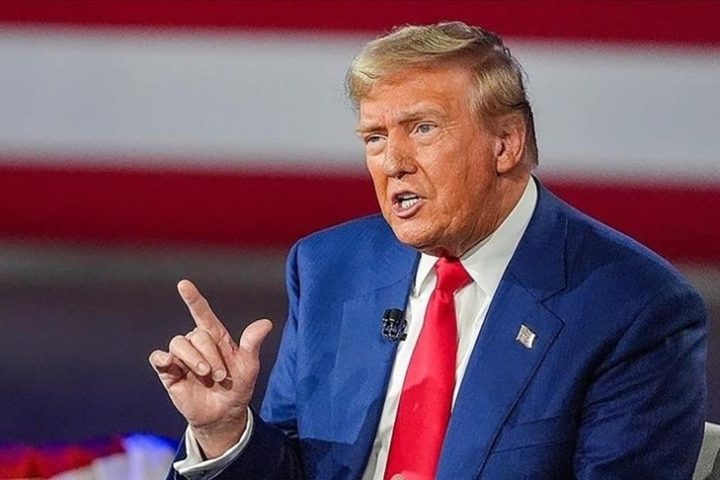The United States Senate has become a battleground for cryptocurrency’s regulatory future as competing visions for digital asset governance clash in increasingly contentious debates. While the crypto industry and millions of American investors await clarity, political divisions, ideological conflicts, and competing regulatory philosophies have stalled comprehensive legislation that could define how the United States approaches cryptocurrency for decades. Understanding the tensions paralyzing Senate action reveals not just the challenges of regulating emerging technology, but fundamental disagreements about innovation, consumer protection, and America’s role in the global digital economy.
The Stakes: Why Crypto Regulation Matters
The absence of clear, comprehensive cryptocurrency regulation creates significant costs and uncertainties affecting American innovation, investor protection, and international competitiveness. Understanding what’s at stake explains why Senate inaction carries serious consequences.
Innovation and Competitiveness Concerns
The U.S. cryptocurrency industry argues that regulatory uncertainty drives companies, developers, and capital offshore to jurisdictions with clearer rules. This “brain drain” could cost America technological leadership in blockchain and digital assets—sectors potentially as transformative as the internet itself.
Without clear regulatory pathways, promising startups choose to launch in Singapore, Switzerland, or other crypto-friendly jurisdictions rather than navigating America’s fragmented, enforcement-focused approach. This exodus means innovation happens elsewhere, jobs are created abroad, and American influence over emerging financial infrastructure diminishes.
Proponents of comprehensive legislation warn that continued inaction risks America becoming technological follower rather than leader in digital finance—a costly surrender of competitive advantage in strategically important sector.
Consumer Protection Gaps
The regulatory vacuum also creates consumer protection concerns as millions of Americans invest in cryptocurrency without adequate safeguards. Fraud, manipulation, and platform failures have cost investors billions, with limited recourse due to unclear regulatory authority.
Consumer advocates argue that comprehensive legislation is urgently needed to establish basic protections including disclosure requirements, custody standards, market surveillance, and enforcement mechanisms preventing fraud and abuse. Current patchwork oversight leaves dangerous gaps that bad actors exploit.
Market Integrity and Financial Stability
Beyond individual investors, cryptocurrency’s growing integration with traditional finance raises systemic risk concerns. Without appropriate oversight, crypto market dysfunction could spill over into broader financial systems, threatening stability.
Regulators worry about leverage, interconnections between crypto and traditional markets, stablecoin risks, and potential runs that could cascade through financial systems. Comprehensive regulation could establish guardrails managing these risks before they materialize into crises.
The Competing Bills: Different Visions for Crypto Regulation
Multiple cryptocurrency bills have been proposed in the Senate, each reflecting different priorities, constituencies, and regulatory philosophies. Understanding these competing proposals illuminates the tensions preventing consensus.
Market Structure and Regulatory Clarity Bills
Several proposals focus primarily on establishing clear regulatory frameworks defining which agencies oversee which digital assets, how cryptocurrencies should be classified, and what compliance requirements apply to different activities.
These bills typically attempt to divide authority between the Securities and Exchange Commission and Commodity Futures Trading Commission, establish registration requirements for exchanges and intermediaries, and create disclosure obligations for token issuers.
Key provisions often include:
- Clear definitions distinguishing securities tokens from commodity tokens based on objective characteristics
- Registration pathways allowing compliant offerings without prohibitive costs
- Custody standards ensuring safe storage of customer digital assets
- Market surveillance requirements detecting manipulation and fraud
- Disclosure obligations providing investors with material information
Supporters argue these frameworks provide needed clarity while preserving innovation opportunities. Critics contend they’re either too permissive, enabling risky activities, or too restrictive, stifling experimentation.
Consumer Protection-Focused Legislation
Alternative proposals emphasize consumer protection over market structure, prioritizing fraud prevention, disclosure requirements, and enforcement authority over regulatory clarity for industry participants.
These bills often include stricter marketing restrictions, enhanced penalties for fraud, mandatory insurance or compensation funds, cooling-off periods for certain transactions, and expanded regulatory authority to pursue bad actors.
Consumer advocates favor these approaches, arguing that investor protection must precede innovation encouragement. Industry participants typically oppose them as excessively restrictive and potentially unworkable given cryptocurrency’s technical characteristics.
Stablecoin-Specific Regulation
Given stablecoins’ growing importance and potential systemic risk, several proposals specifically address dollar-pegged digital assets. These bills establish issuance requirements, reserve standards, redemption guarantees, and regulatory supervision.
Stablecoin legislation represents area of relative consensus, with many senators recognizing that these instruments require oversight given their payment system functions and potential financial stability implications.
The Political Fault Lines
Senate tensions over cryptocurrency legislation break along multiple dimensions beyond simple partisan divisions, creating complex coalitions and opposition that defy traditional political categorization.
Partisan Divisions
Republican senators generally favor lighter-touch regulation emphasizing innovation and market freedom, while Democrats typically prioritize consumer protection and financial stability. However, these generalizations oversimplify as both parties include crypto-skeptics and crypto-enthusiasts.
Some Republicans view cryptocurrency as embodying free-market principles and individual liberty deserving minimal regulation. Others see it as facilitating crime and evading legitimate government oversight.
Democrats similarly divide between those viewing crypto as democratizing finance and enabling financial inclusion versus those seeing it as speculative mania harming vulnerable investors while enriching insiders.
Ideological Conflicts
Beyond partisanship, fundamental ideological conflicts shape debates. Libertarian-leaning senators resist government intervention on principle, viewing cryptocurrency regulation as inappropriate state overreach into private voluntary transactions.
Progressive senators often view cryptocurrency skeptically as speculative asset enriching early adopters while risking harm to working families who invest late in bubble cycles. This ideological lens produces support for strict regulation or even prohibition.
Centrist pragmatists typically seek balanced approaches acknowledging both cryptocurrency’s potential benefits and genuine risks requiring management. This middle ground struggles for traction amid polarized debate.
Competing Regulatory Philosophies
Tensions also reflect competing regulatory philosophies about how emerging technologies should be governed. Some senators favor principles-based regulation establishing high-level standards while allowing flexibility in compliance approaches.
Others prefer rules-based regulation with specific, detailed requirements leaving little discretion. These philosophical differences create gridlock as proposals reflecting one approach face opposition from those favoring alternatives.
Additionally, debates about whether cryptocurrency requires specialized new frameworks or whether existing securities and banking laws adequately address it create fundamental disagreements preventing compromise.
Key Sticking Points Preventing Agreement
Several specific issues repeatedly stall progress as senators struggle to reconcile competing priorities and philosophies. Understanding these sticking points illuminates why compromise remains elusive.
SEC vs. CFTC Jurisdiction
Perhaps the most contentious issue involves dividing regulatory authority between the Securities and Exchange Commission and Commodity Futures Trading Commission. Different proposals draw jurisdictional lines differently, reflecting views about which agency is better suited for cryptocurrency oversight.
The crypto industry generally prefers CFTC oversight, viewing the commission as more favorable to innovation than the SEC’s enforcement-focused approach. However, many Democrats believe most cryptocurrencies are securities requiring SEC oversight and investor protections.
This jurisdictional battle reflects broader conflicts about regulatory philosophy, with the CFTC typically employing lighter-touch oversight for commodity markets while the SEC maintains comprehensive disclosure and registration regimes for securities.
Decentralized Finance Treatment
How to regulate decentralized finance protocols represents another major sticking point. DeFi’s lack of centralized operators complicates traditional regulatory approaches assuming identifiable entities that can be licensed, supervised, and held accountable.
Some senators advocate regulating DeFi developers, arguing that code creators bear responsibility for how their protocols are used. Others contend this approach would prove impractical and potentially unconstitutional, comparing it to regulating knife manufacturers for stabbings.
Alternative approaches including regulating DeFi interfaces, requiring smart contract disclosures, or exempting truly decentralized protocols from certain requirements each face objections from different constituencies.
Stablecoin Issuer Requirements
While stablecoin regulation enjoys broader support than general cryptocurrency legislation, significant disagreements persist about whether issuers must be banks, what reserve requirements are appropriate, how redemption rights should be structured, and what systemic risk safeguards are necessary.
Banking regulators favor requiring stablecoin issuers to obtain bank charters subjecting them to comprehensive banking oversight. Fintech companies and some senators view this requirement as unnecessarily restrictive, arguing for specialized payment stablecoin charters with tailored requirements.
Reserve composition—particularly whether issuers can hold assets beyond cash and short-term Treasuries—remains contentious. Stricter requirements enhance stability but reduce issuer profitability, creating industry opposition.
Industry Lobbying and Political Influence
The cryptocurrency industry has invested heavily in political engagement attempting to influence legislation through campaign contributions, lobbying expenditures, and grassroots mobilization. This influence campaign has produced both progress and backlash.
Record Lobbying Expenditures
Cryptocurrency companies, trade associations, and advocacy groups have spent hundreds of millions on lobbying, making the industry among Washington’s biggest spenders. Major exchanges, token issuers, and venture capital firms employ armies of lobbyists working Senate offices.
This expenditure reflects both the industry’s substantial financial resources and its recognition that legislative outcomes will profoundly affect business viability. The investment has secured sympathetic hearings and influenced bill language favoring industry positions.
However, the lobbying blitz has also provoked backlash from senators who view it as improper influence attempting to purchase favorable treatment rather than serving public interest.
Campaign Contributions and Super PACs
Beyond lobbying, the crypto industry has become major political donor through individual contributions and Super PAC spending. Industry-backed Super PACs have spent tens of millions supporting crypto-friendly candidates and opposing skeptics.
This political spending has influenced electoral outcomes in several races, demonstrating the industry’s ability to reward friends and punish enemies. The demonstrated electoral consequences give crypto-friendly positions political salience beyond the issue’s inherent importance.
Critics characterize this spending as corrupting influence preventing needed regulation, while supporters view it as legitimate political participation from economically important sector.
Grassroots Mobilization
Industry efforts extend beyond Washington insiders to include grassroots mobilization of cryptocurrency owners. Exchanges and advocacy groups encourage users to contact senators, emphasizing that cryptocurrency investors represent constituents with legitimate interests deserving representation.
Mobilization tactics include:
- Email and call campaigns flooding Senate offices with constituent communications
- Town hall participation where crypto advocates challenge senators about regulatory positions
- Social media pressure creating viral campaigns supporting or opposing specific legislation
- Educational initiatives framing regulatory debates in terms favorable to industry positions
- Coalition building with technology groups, civil liberties organizations, and other constituencies
This grassroots activity demonstrates genuine public interest in cryptocurrency policy, though critics note that industry coordination often drives supposedly organic campaigns.
Paths Forward: Possible Scenarios
Several possible scenarios could break the current Senate stalemate, each with different implications for cryptocurrency’s regulatory future in America.
Comprehensive Bipartisan Compromise
The optimistic scenario involves bipartisan compromise producing comprehensive legislation balancing innovation with consumer protection. This outcome would require concessions from both sides and leadership willing to champion difficult votes.
Steps that might produce compromise include:
- Identify common ground on issues enjoying broad support like stablecoin regulation or fraud enforcement
- Establish bipartisan working groups bringing together senators from both parties to negotiate detailed provisions
- Engage industry and consumer advocates in constructive dialogue identifying mutually acceptable frameworks
- Build leadership support from Senate Majority and Minority Leaders enabling floor consideration
- Link crypto legislation to must-pass bills creating political pressure for resolution
- Accept imperfect solutions recognizing that delayed action waiting for ideal bills imposes real costs
- Plan for future amendments acknowledging that initial legislation will require refinement as markets evolve
This path requires political will that currently appears lacking, but crises or changed political circumstances could create openings for compromise.
Piecemeal Progress
More realistic than comprehensive legislation is piecemeal progress on less controversial issues. Stablecoin regulation, market structure for derivatives, or custody standards might advance while broader questions remain unresolved.
This incremental approach provides some clarity without requiring resolution of most divisive issues. However, it leaves fundamental questions unanswered and may prove insufficient for addressing cryptocurrency’s actual risks and opportunities.
Continued Gridlock
The pessimistic scenario involves continued gridlock as irreconcilable differences prevent legislative progress. This outcome maintains the current enforcement-focused approach without comprehensive frameworks, potentially driving innovation offshore while leaving investors vulnerable.
Gridlock might persist until external shocks like major market failures, international competitive threats, or electoral realignments change political dynamics enabling previously impossible compromises.
International Implications
Senate inaction doesn’t occur in vacuum—other countries are establishing cryptocurrency frameworks that could capture market share, attract innovation, and set global standards if America continues its paralysis.
The European Union’s MiCA regulation, United Kingdom’s crypto frameworks, and Asian jurisdictions’ specialized rules create alternative destinations for cryptocurrency businesses frustrated by U.S. uncertainty. This regulatory competition could ultimately diminish American influence over digital finance’s future.
Additionally, other countries developing central bank digital currencies may establish payment infrastructure challenging dollar dominance if American regulatory dysfunction prevents competitive private sector innovation.
Conclusion: The Cost of Inaction
Senate tensions over cryptocurrency legislation reflect genuine, difficult questions about balancing competing priorities in regulating transformative emerging technology. However, the cost of continued inaction grows as regulatory vacuum drives innovation offshore, leaves investors unprotected, and cedes American influence over global digital finance.
Breaking the stalemate requires political courage, willingness to compromise, and recognition that imperfect legislation addressing urgent priorities beats perfect bills that never pass. Whether senators can muster this pragmatism remains uncertain, but the stakes for American innovation, consumer protection, and global competitiveness are undeniably high.
The cryptocurrency regulation debate ultimately transcends digital assets to encompass fundamental questions about how America governs innovation in the 21st century. The Senate’s resolution—or failure to resolve—these tensions will echo far beyond cryptocurrency markets.












